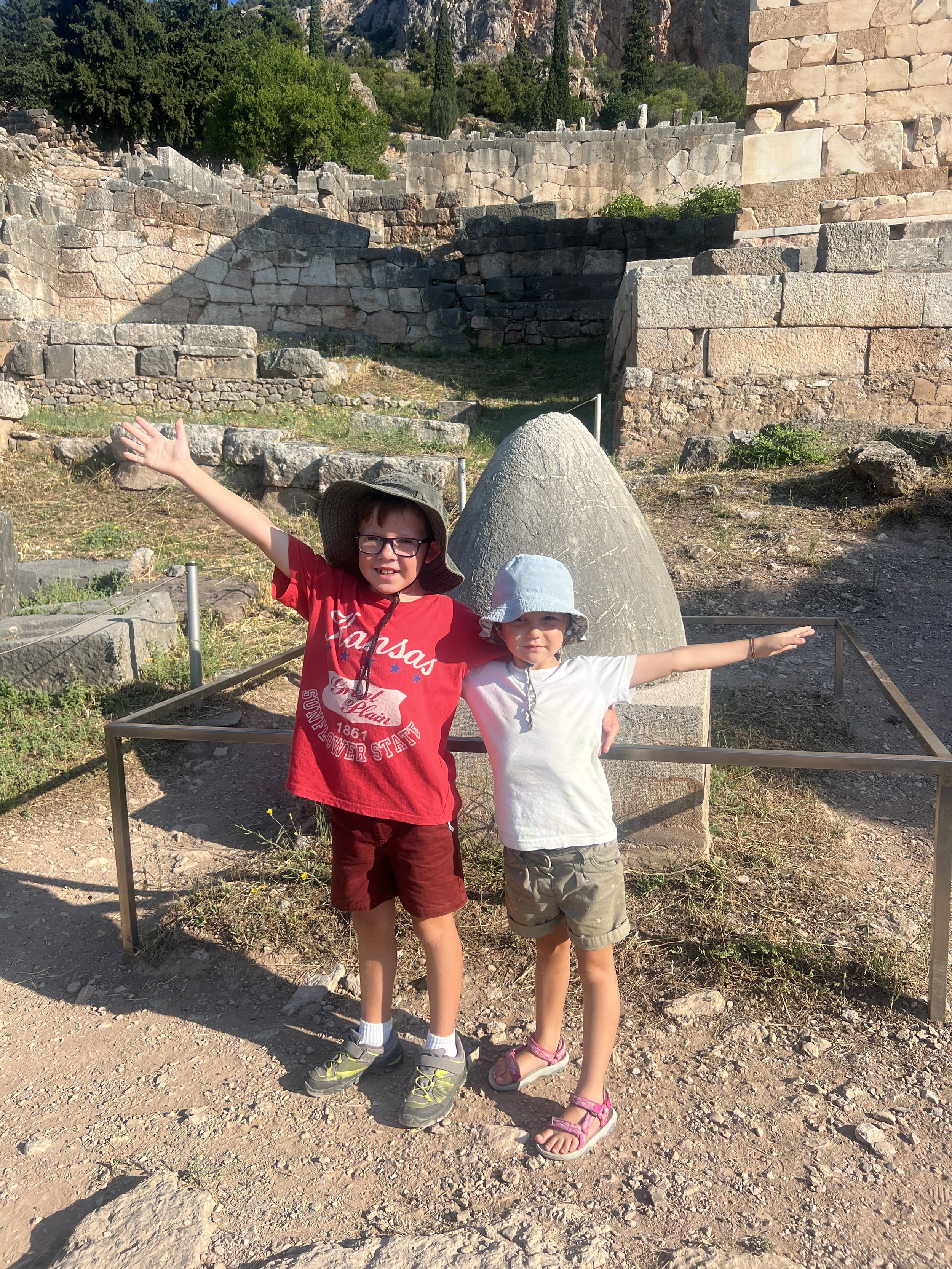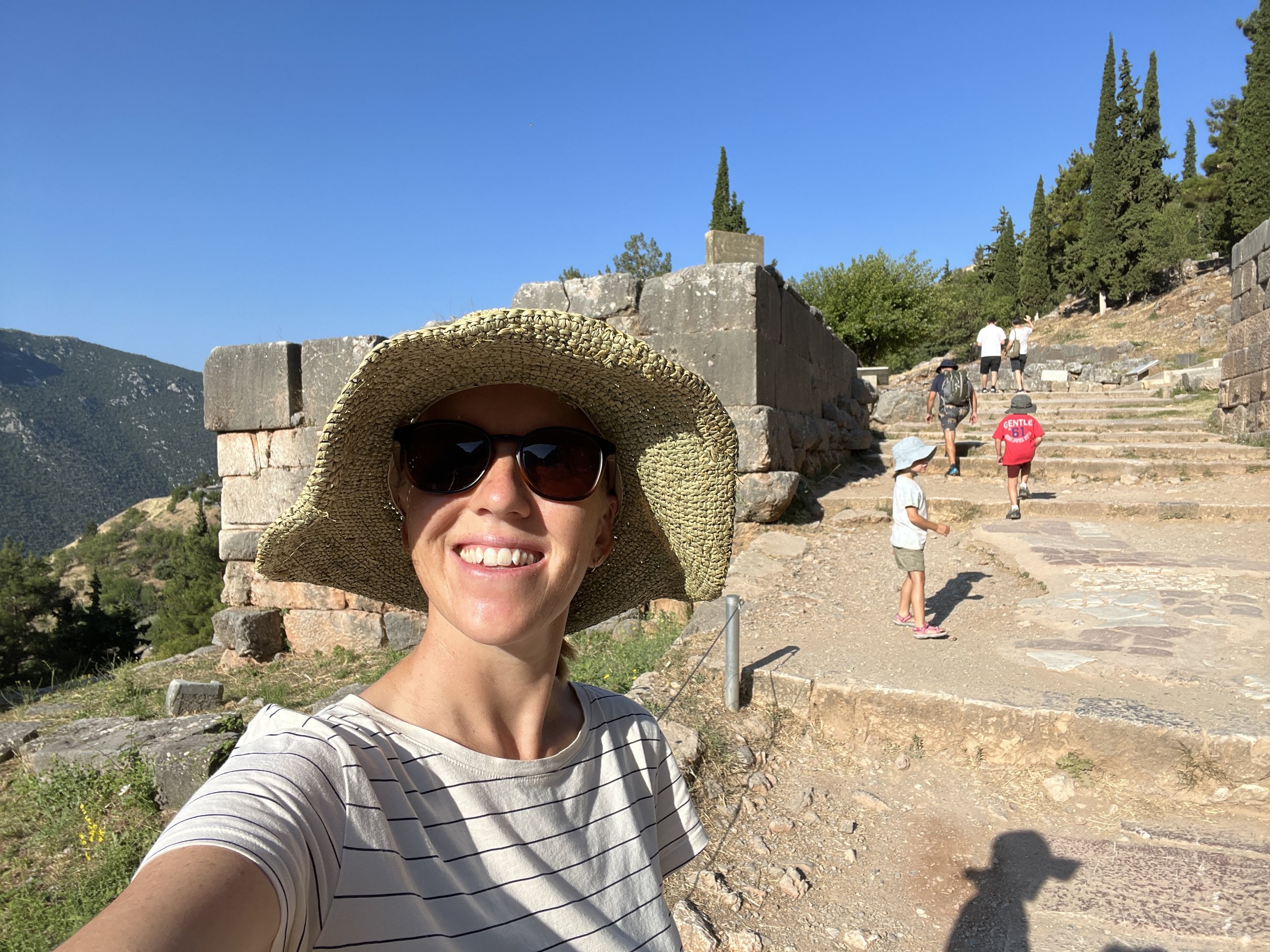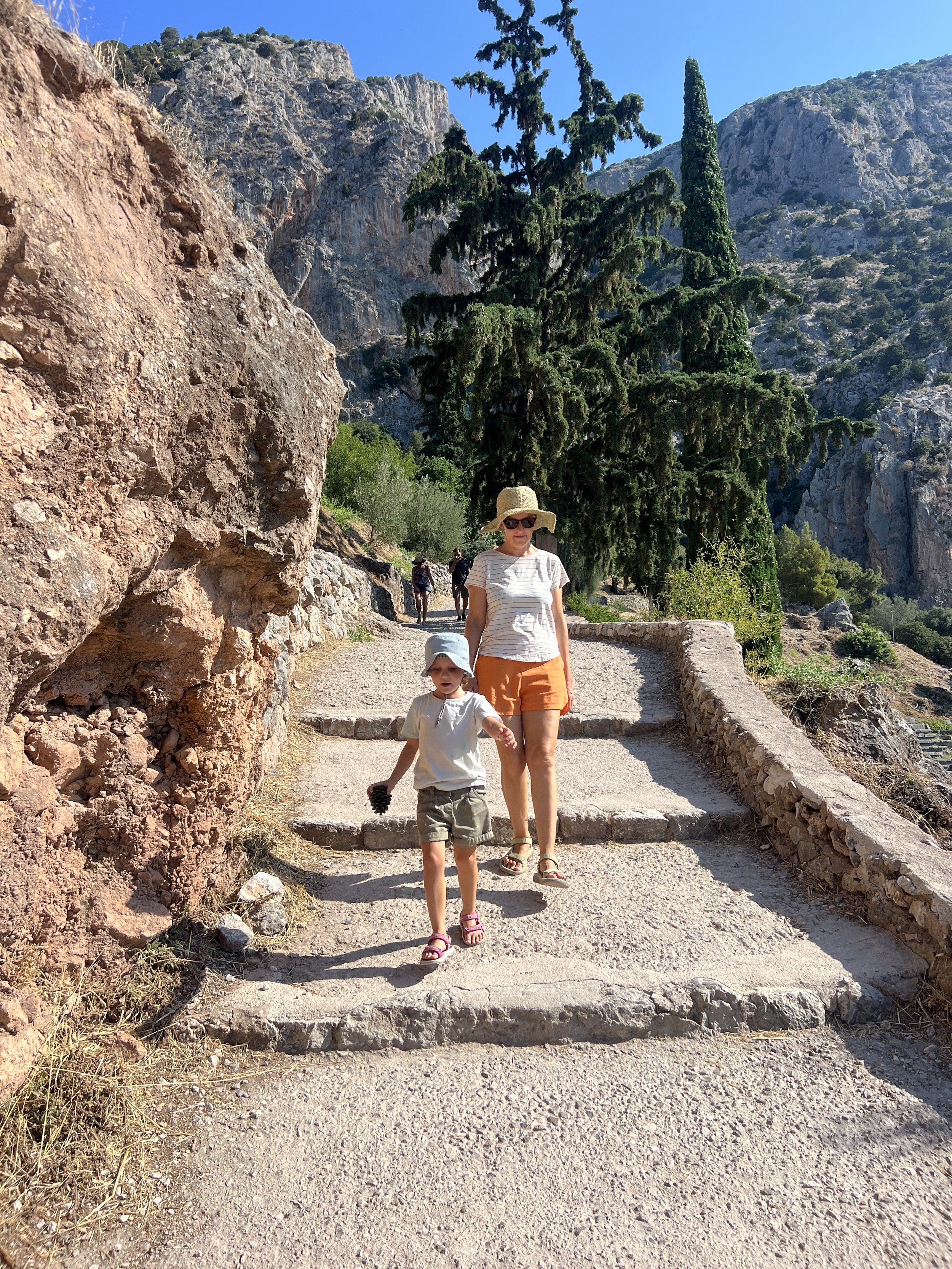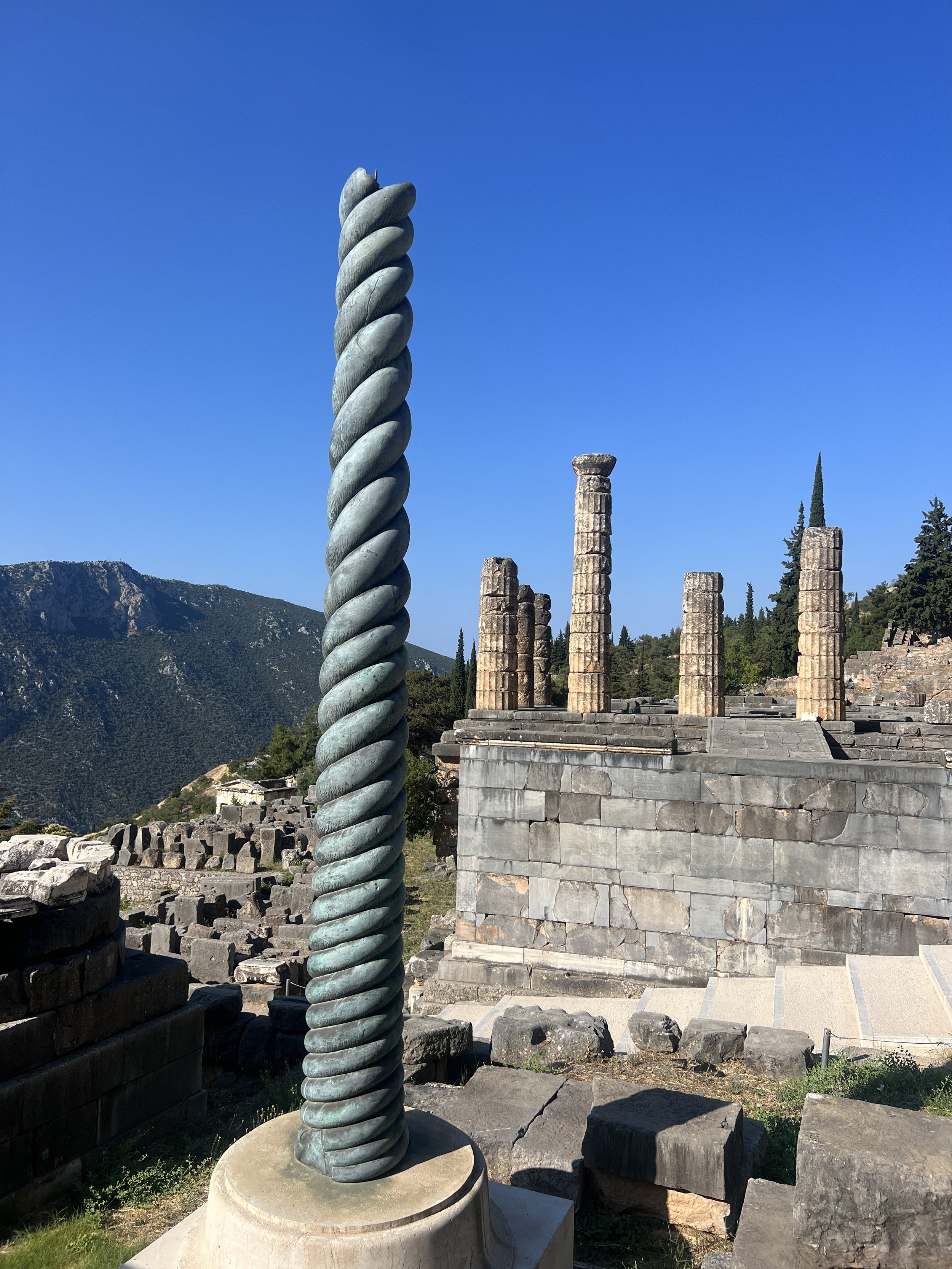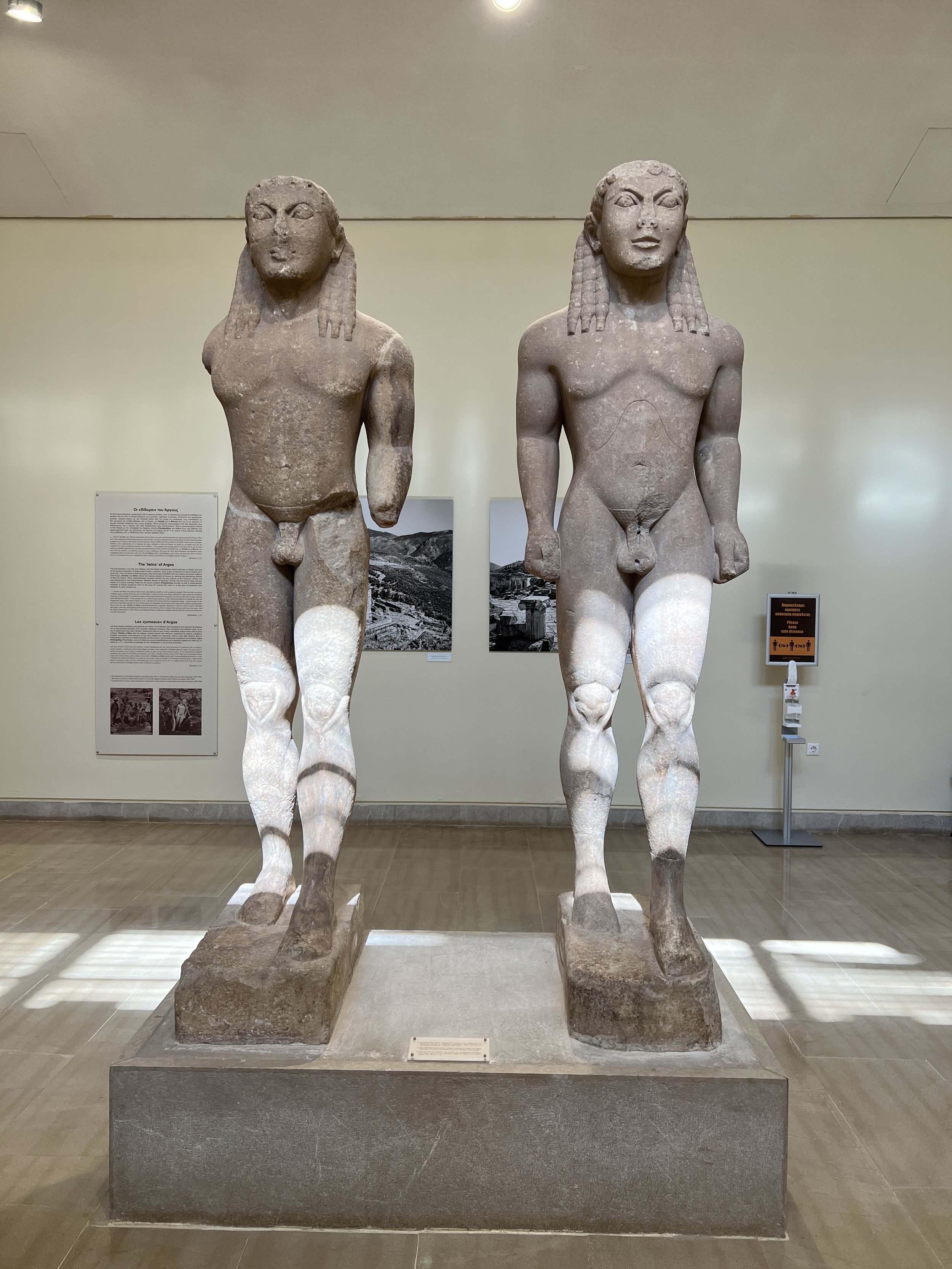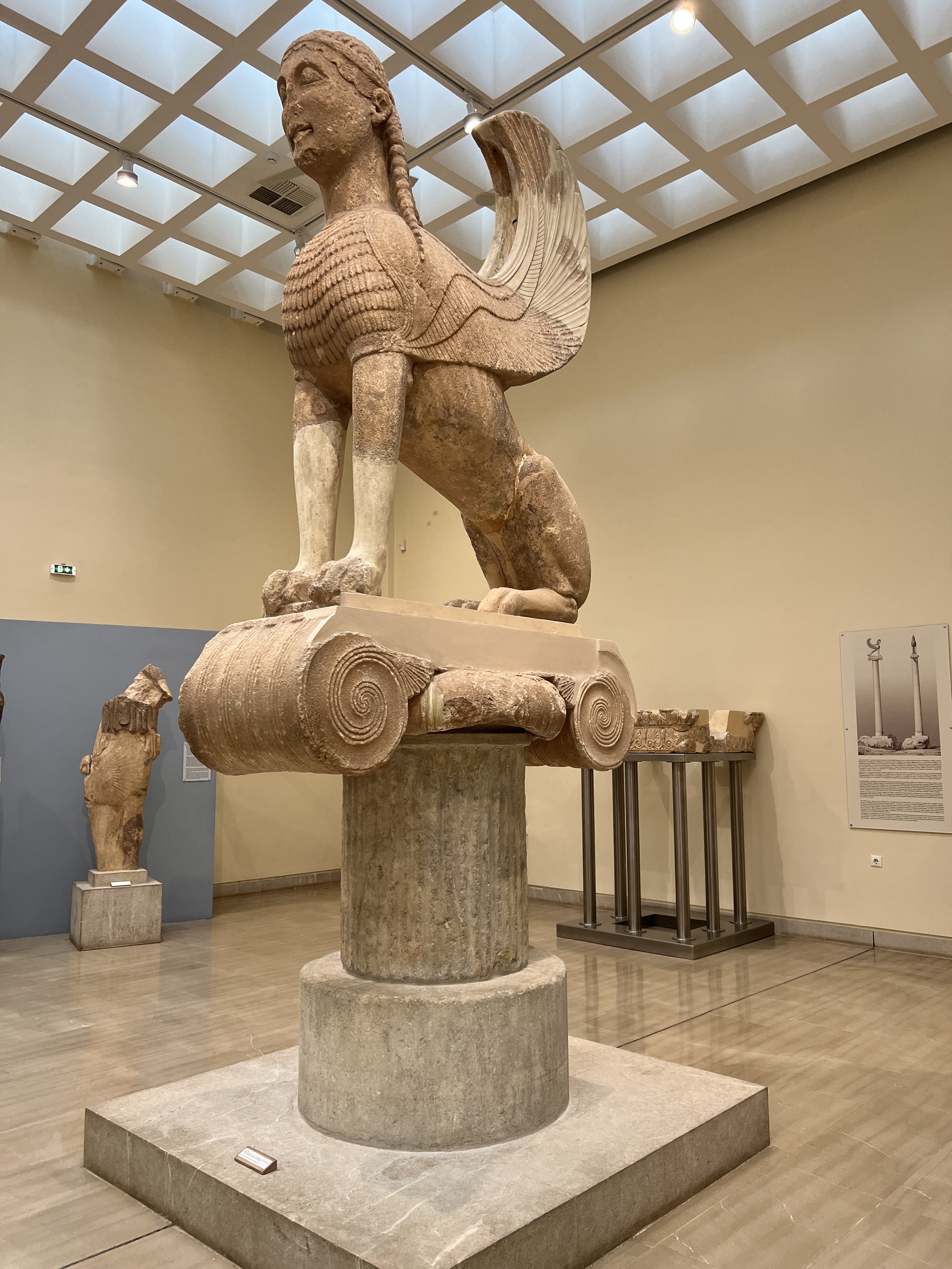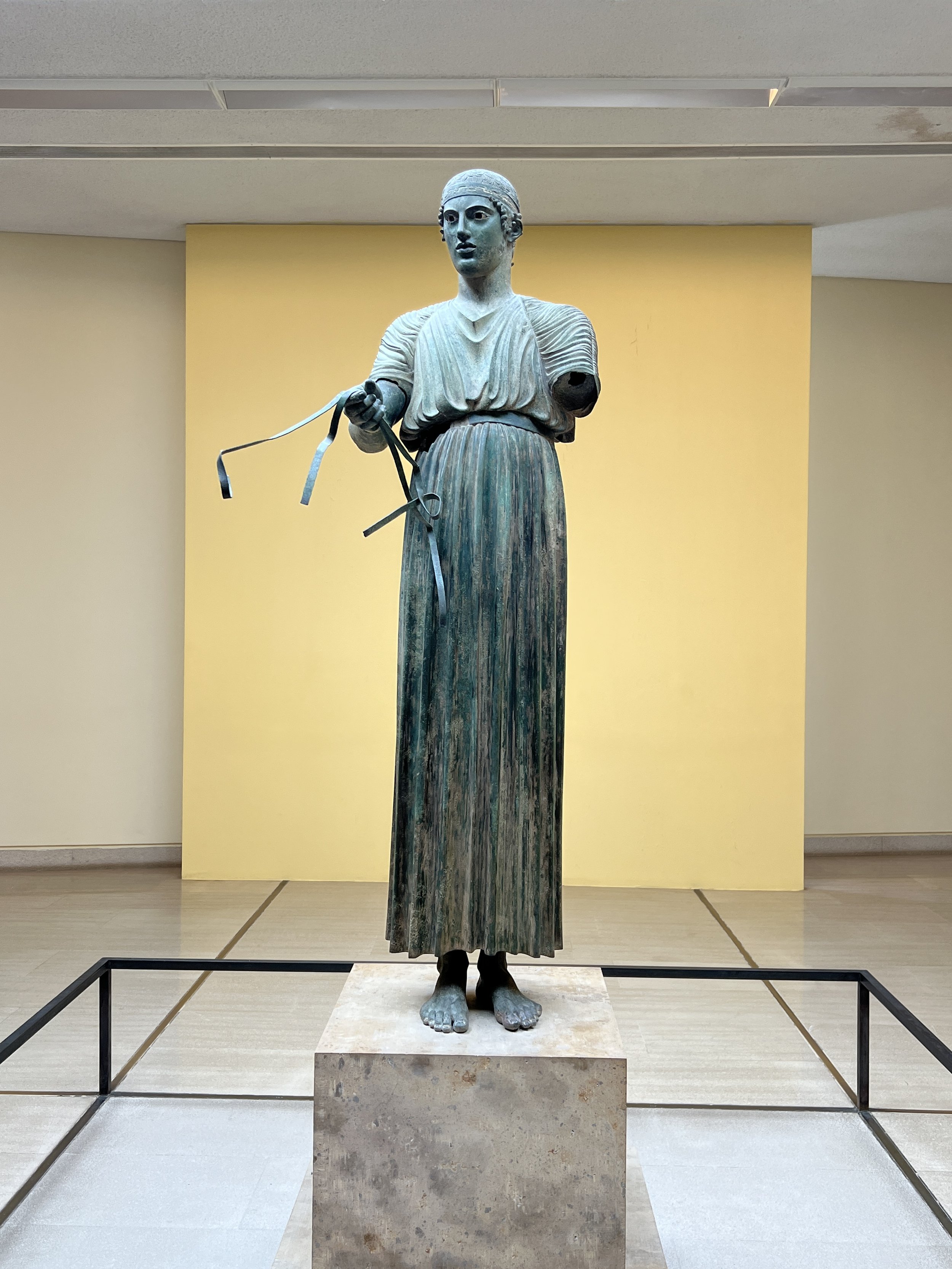Delphi
From Galaxidi - as many people do - we hired a car for the day and drove up to the archeological site of Delphi. Of course, we were up and out early to beat both the crowds and the heat. We wound our way through olive farms and up the slopes of Mount Parnassos, where this spectacular site sits amidst rocky bluffs and sheer cliffs. The air was noticeably cooler up here, which was a great relief in the middle of a heatwave! In fact, not far from here is the Parnassos Ski Resort. (Yes, you can ski in Greece with sea views!)
Ancient Delphi is one of the most important and interesting archaeological sites in Greece. Most notably, Delphi was home to the world-famous oracle Pythia, the high-priestess of Apollo’s temple. Foreign leaders, dignitaries and pilgrims from all over the ancient world would visit the oracle to receive the prophecies of the ancient god Apollo. Delphi was also regarded by the ancients as the centre of the world, as marked by the stone monument known as the omphalos (navel). In mythology, Zeus placed the stone here after launching two eagles from opposite sides of the world and seeing where their paths crossed.
In the 1800s, British and French archeologists visiting the area suspected it was the ancient sanctuary of Delphi. However, the site was occupied by a medieval village that was mining the ancient stones for re-use in their own buildings. The villagers refused to relocate until a significant earthquake some years later, when they happily exchanged the area for a completely new village, now modern-day Delphi.
This UNESCO World Heritage Site clearly once held great influence. In addition to the grand Temple of Apollo, the terraced landscape held a theatre, altars, a gymnasium and numerous treasuries, the most impressive of which is the now-restored Athenian Treasury. And much like in Olympia, the Pythian Games took place here every four years in the stadium that sits at the highest point of the site. It is the best preserved ancient stadium in Greece.
Also on the ancient site is the Archaeological Museum of Delphi. This fantastic museum houses discoveries made at the sanctuary of Delphi and some of the most important works of ancient Greek art, each room arranged chronologically. Of particular note were the iconic Sphinx of Naxos that once sat upon 10m column, the twin statues of Kleobis and Biton, the incredibly detailed craftsmanship of the friezes and architectural elements that decorated the roofline of the Siphnian Treasury, and the famous ancient bronze sculpture of the Charioteer of Delphi. This final piece was only preserved thanks to the great earthquake of 373BC that buried it under debris, subsequently saving it from future looters that plundered its counterparts in the composition and melted them down in order to cover military expenses. It is an enchanting tribute to the athletic art of antiquity.
And Delphi itself is a captivating and legendary landscape, sacred and serene it is fit for both gods and mortals.




